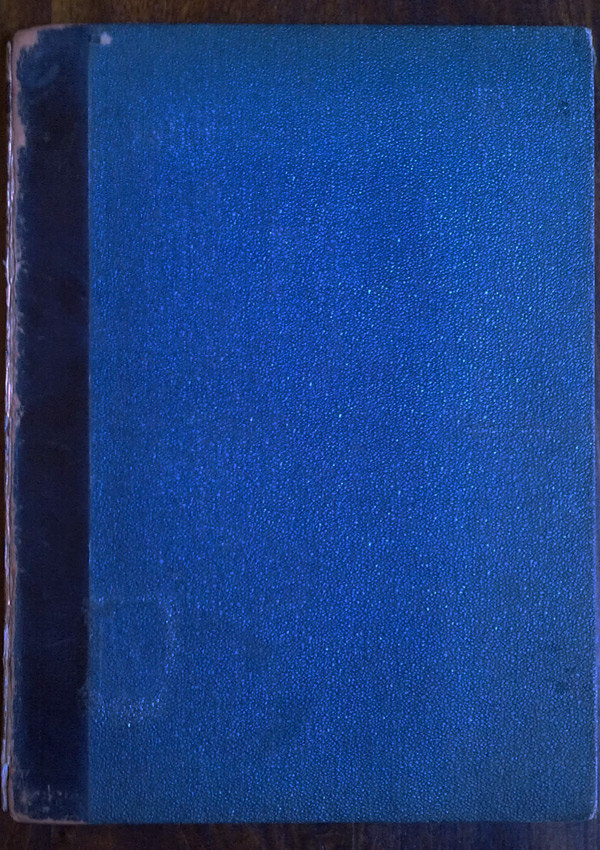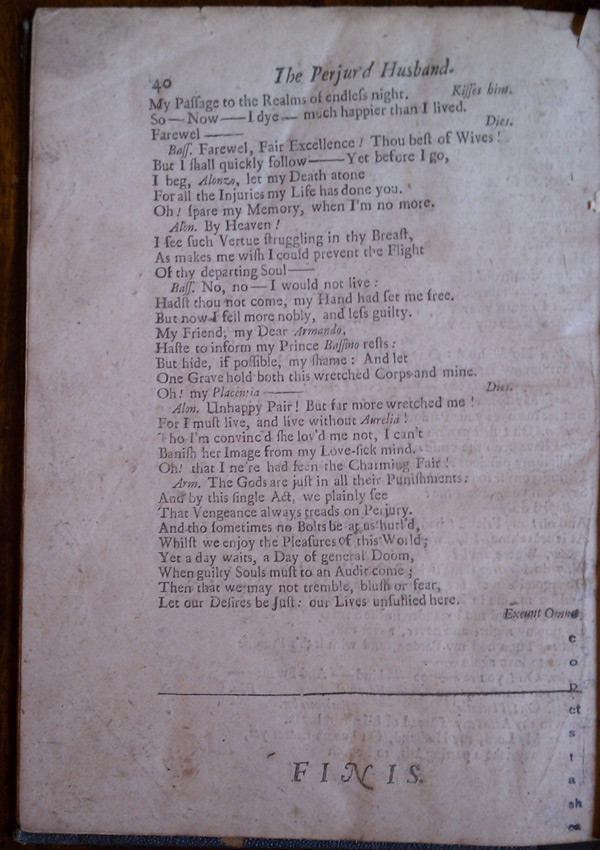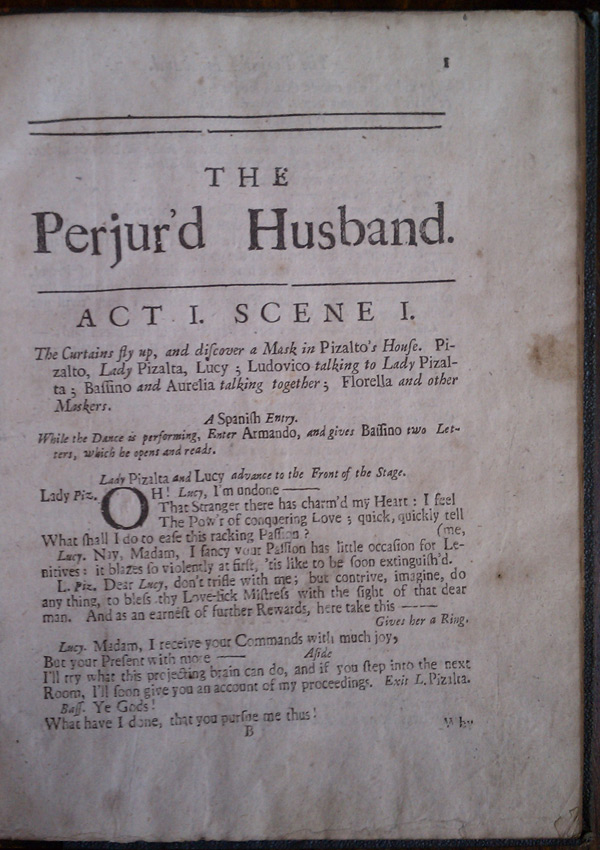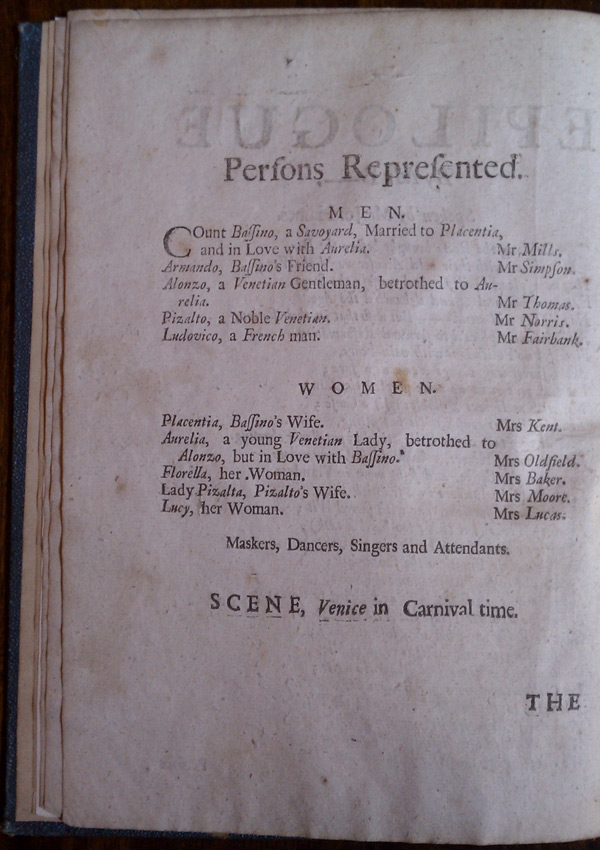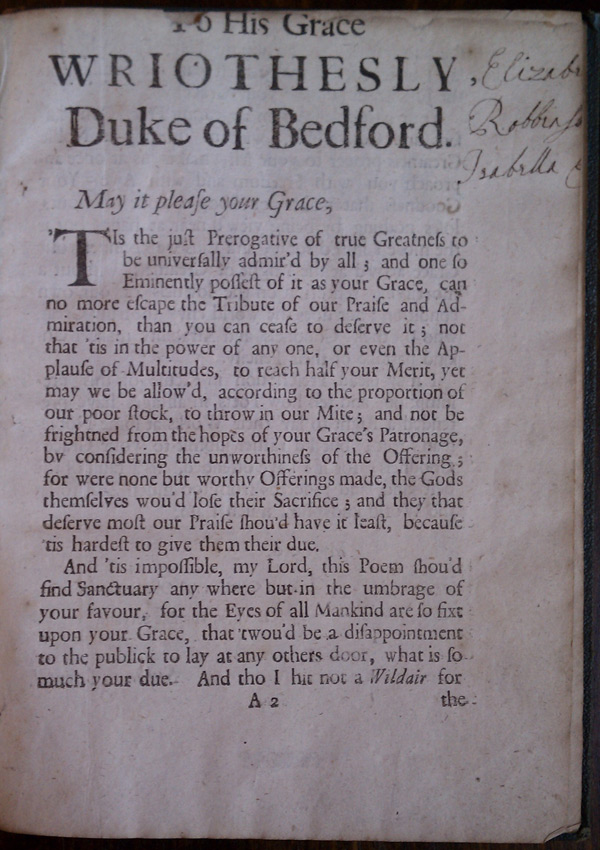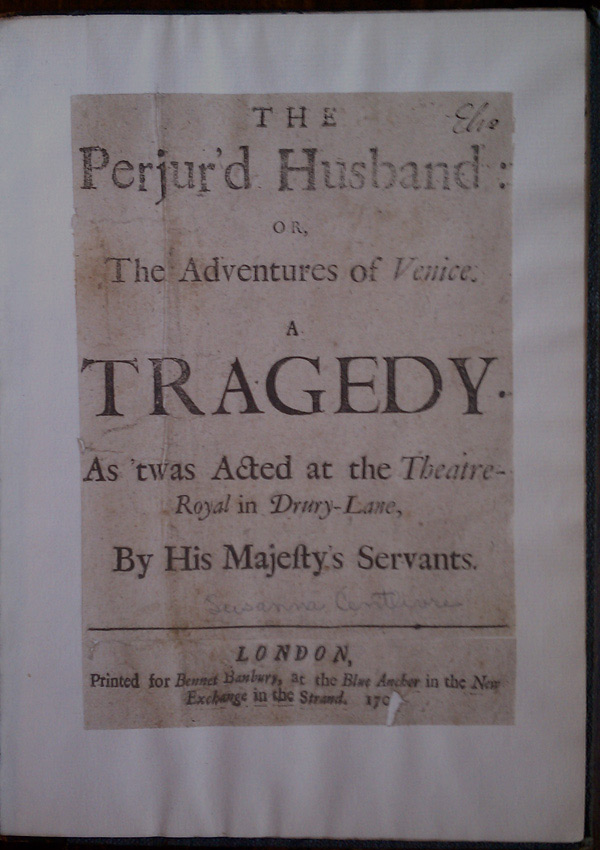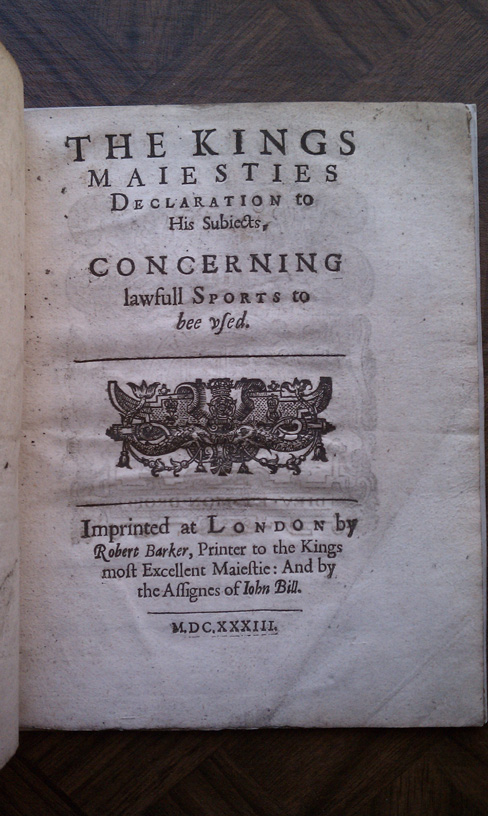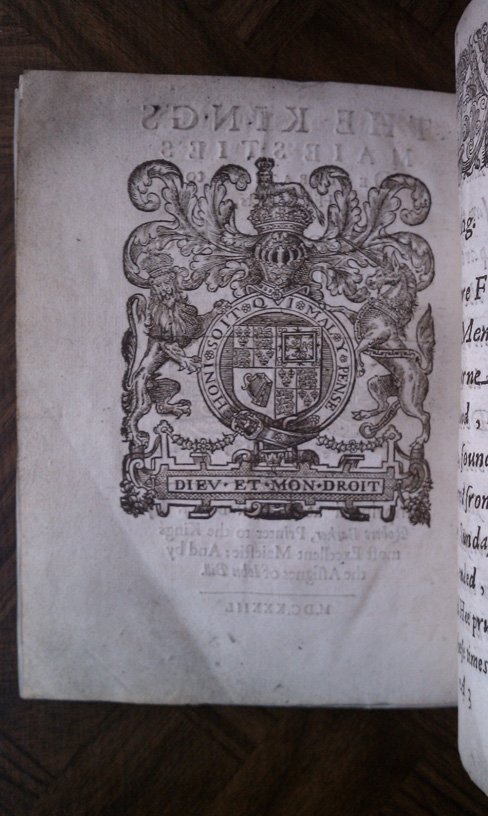Centlivre, Susanna. The perjur’d husband: or the adventures of Venice. A tragedy. As ’twas acted at the Theatre-Royal in Drury-Lane, by His Majesty’s servants. London: Bennet Banbury, 1700. Quarto. Wing C1671.
The perjur’d husband, first performed and printed in 1700 (a second standalone edition followed in 1737), was Susanna Centlivre’s debut play. The ODNB describes it most succinctly, as “a strange play with a tragic main plot set in Venice at carnival time and a bawdy comic sub-plot.” And it is indeed strange, but not without moments of genuine humor and wit. Although the play did not quite make it to a sixth night during its run on the stage of the Theatre Royal, Centlivre claims in her preface to the reader that it nevertheless “went off with general Applause.” Notably, the prologue delivered by Mrs. Oldfield (who played Aurelia) and written by a “Gentleman” confidently introduces the play as one authored by a woman:
And here’s to night what doubly makes it sweet,
A private Table, and a Ladys treat:
At her reflections none can be uneasy,
When the kind Creature does her best to please ye.
. . .
Whate’re’s her fate, she’s sure to gain the Field,
For Women always Conquer when they yeild.
As a writer of more straightforward comedies, Susanna Centlivre became the most popular female playwright in the generation after Aphra Behn. She died in 1723, but her reputation remained such that publishers collaborated to issue the collected works of “the celebrated Mrs. Centlivre” in a three-volume duodecimo collection in 1761, almost forty years later. Editions of individual plays were still being published well into the 19th century; in performance, they stayed in repertory for at least 150 years. Her most popular play, The Busybody, saw the stage more than 450 times before 1800 and was even counted among David Garrick’s favorites.
Centlivre’s second husband, Mr. Carroll, died before she became involved in the theater, but it was his surname that she used during the early phase of her career: it is with “Susanna Carroll” that she signs her dedication to the Duke of Bedford in The perjur’d husband. And although she was a successful playwright overall, Centlivre surely had her detractors, especially because as the politics of her plays became more transparent. In later plays, “[Tory] party fervour forms another obstacle to the happiness of the young lovers—always whiggishly inclined.” An unsympathetic annotator of a first edition copy of The perjur’d husband at the Huntington Library even felt it necessary to add to the dedication that Centlivre was not only “Your Grace’s most Obedient and Devoted Humble Servant,” but that she was also a “Whore.”
The present copy of The perjur’d husband collates complete, with its title page trimmed and mounted on newer stock. For whatever reason, a small section of the title page that includes the attribution to “S. Carroll” has been removed from the title page. As mounted, there is a seam below the horizontal rule and above the imprint. Margins throughout the playbook are quite ample, with only one exception: trimming and small chips to the upper margin encroach into the headlines “To His Grace” and “The Epistle Dedicatory” on sigs. A2r and A2v (see photo). The paper is also quite bright, with only occasional light stains and toning. The play is currently bound in what appears to be an old quarter binding from a library; both boards are cleanly detached.
Although it is doubtful that any of her plays will ever achieve the status of Behn’s The Rover, scholarly interest in Centlivre is nevertheless on the rise. The Modern Language Association’s International Bibliography records some fourteen studies (articles, book chapters, and dissertations) on Centlivre in the past dozen years, and her plays are increasingly taught at the graduate and even undergraduate levels. Assuming that Centlivre continues to gain popularity, her early quartos will become more and more of an asset in collections—institutional as well as private—of early modern and Restoration drama. UNAVAILABLE
